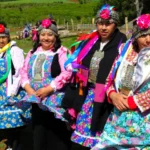Morocco, a land of mesmerizing landscapes and rich cultural heritage, is equally renowned for its traditional clothing. Moroccan attire reflects the country’s deep-rooted traditions, Islamic influences, and centuries of artistic innovation. These garments are celebrated for their intricate designs, vibrant colors, and cultural significance.
The Historical and Cultural Foundations of Moroccan Clothing
Moroccan traditional clothing has been shaped by a blend of Berber, Arab, and Andalusian influences. This unique fusion has resulted in attire that is both functional and ornamental, embodying the diverse identities within the country.
Cultural Influences
- 🌟 Berber Heritage: Indigenous Berber communities contributed earthy tones, natural fabrics, and practical designs.
- ☮️ Arab-Islamic Influence: Modesty and elegance are key themes, reflected in flowing robes and head coverings.
- 🇪🇸 Andalusian Legacy: Luxurious textiles and ornate embroidery echo the sophistication of medieval Spain.
Iconic Traditional Moroccan Garments
For Women
- 👗 Caftan: An ankle-length, flowing gown often made from silk or brocade. It is adorned with detailed embroidery, beads, or sequins.
- 🌎 Takchita: A two-piece ensemble consisting of a caftan base and an over-garment, secured with a decorative belt called a mdamma.
- 🌿 Hijab: Many women wear hijabs, which come in various fabrics and patterns, complementing their outfits.
- 🌴 Silk Scarves: Often used as head coverings or shawls, these accessories add a touch of elegance.
- 💞 Jewelry: Silver necklaces, bangles, and earrings highlight Morocco’s craftsmanship.
For Men
- 🧣 Djellaba: A long, hooded robe worn daily or during special occasions. Made from wool or cotton, it provides comfort and protection.
- 👟 Babouches: Leather slippers that are stylish and practical, available in bright colors and elaborate designs.
- 🪤 Gandoura: A sleeveless tunic often worn during summer or casual settings.
- 🌏 Turbans: Particularly in desert regions, men wear turbans to shield themselves from the sun and sand.
- 🦼 Belts and Accessories: Woven belts and daggers sometimes accompany traditional outfits, symbolizing status.
Regional Variations in Moroccan Clothing
Marrakech
Known for its vibrant souks, Marrakech showcases intricately embroidered caftans and djellabas, often in bold, jewel-toned fabrics.
Fez
Fez’s clothing reflects its historic prominence, with luxurious silk garments and elaborate mdammas.
See also Traditional Clothing of Colombia: A Vibrant Tapestry of Heritage and Diversity
Traditional Clothing of Colombia: A Vibrant Tapestry of Heritage and Diversity
Rif Mountains
In this region, Berber women wear brightly colored dresses and striped shawls, often handwoven using traditional techniques.
Sahara Desert
The desert communities favor light, breathable fabrics like cotton for djellabas and turbans, designed for harsh climates.
Casablanca
As a modern hub, Casablanca integrates traditional elements into contemporary fashion, blending heritage with modernity.
Traditional Moroccan Clothing in Celebrations
Weddings
Moroccan weddings are a showcase of sartorial splendor. Brides wear elaborate takchitas in multiple layers, often changing outfits several times during the celebration.
See also Traditional Clothing of Argentina: A Cultural Mosaic of Elegance and Heritage
Traditional Clothing of Argentina: A Cultural Mosaic of Elegance and Heritage
Religious Festivals
During festivals such as Eid al-Fitr and Eid al-Adha, men and women don their finest djellabas and caftans to mark the occasion.
Cultural Events
Events like the Moussem of Tan-Tan bring together tribes, showcasing traditional clothing such as djellabas and Berber jewelry.
Craftsmanship Behind Moroccan Clothing
Textiles and Fabrics
Moroccan garments are crafted using luxurious materials like silk, wool, and fine cotton. The fabrics often feature intricate patterns and vivid colors.
Embroidery and Embellishments
Hand-embroidered motifs inspired by nature, geometric shapes, and religious art elevate the garments into works of art.
Dyeing Techniques
Natural dyes from plants, spices, and minerals create vibrant hues, ensuring an eco-friendly and authentic process.
Preserving Moroccan Clothing Traditions
Artisan Cooperatives
Local cooperatives ensure the survival of traditional weaving and embroidery techniques, supporting artisans and their communities.
Museums and Cultural Centers
Institutions like the Dar Batha Museum in Fez display historical garments, educating visitors about Morocco’s sartorial legacy.
Fashion’s Revival of Tradition
Modern Moroccan designers incorporate traditional elements into contemporary collections, bringing global attention to the country’s heritage.
A Timeless Expression of Moroccan Identity
Traditional Moroccan clothing is a living testament to the nation’s history, values, and creativity. Whether through the grandeur of a wedding takchita or the everyday elegance of a djellaba, these garments continue to captivate and connect generations, preserving Morocco’s unique cultural narrative.